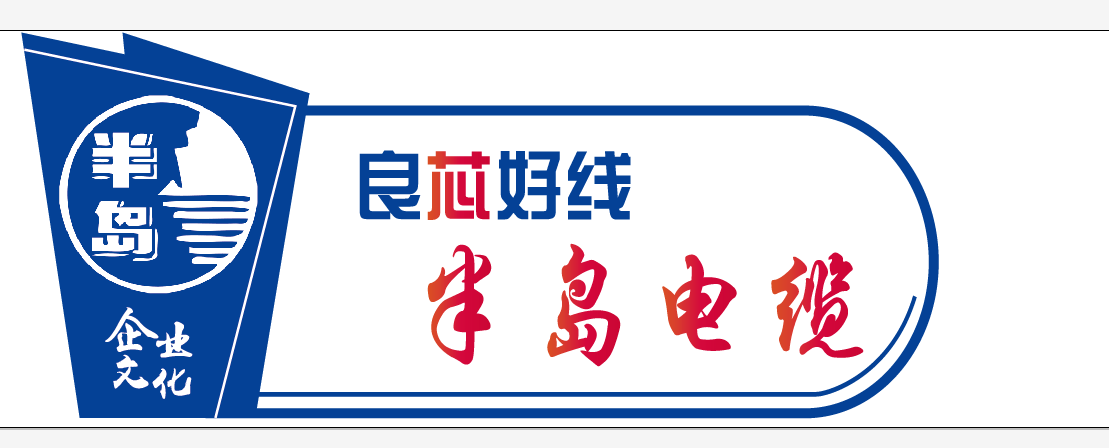As the second largest industry in the global machinery industry after the automobile industry, the cable industry has developed rapidly in recent years. However, the product quality problems encountered in the actual production have been puzzling the production efficiency and cost of enterprises. Here we summarize the common extrusion problems encountered in cable production and solutions for your reference.
1、 Pimple
1. Pimple phenomenon
(1) There are small crystal points and particles on the surface of the plastic layer, which are distributed around the surface of the plastic layer.
(2) The pimple caused by scorching has scorched material on the surface of the plastic layer, especially on the surface of the glue joint.
(3) There are impurities on the plastic surface and impurities in the lumps of slices.
(4) The plastic pimple caused by poor plasticization is found to be cooked glue in the pimple after slicing.
2. Causes of pimples
(1) Due to the low temperature control, the plastic is squeezed out of the machine head before being plasticized.
(2) The quality of plastics is poor, and there are resins that are difficult to plasticize. These resins are extruded without complete plasticization.
(3) When feeding, some impurities are added into the hopper, causing impurities lumps.
(4) The temperature control is too high, resulting in scorching, resulting in scorching lumps.
(5) The molding cover was not pressed tightly, and it deteriorated after rubber feeding, resulting in scorching lumps.
3. Methods to eliminate pimples
(1) The temperature should be properly raised for the pimple caused by the plastic itself.
(2) When feeding, strictly check whether there are sundries in the plastic. When feeding, do not add other sundries into the hopper. If impurities are found, immediately clean the head and remove the glue stored in the screw.
(3) If it is found that the temperature is too high, the temperature should be reduced immediately. If the effect is not good, the machine head and screw should be cleaned immediately to remove scorched materials.
(4) In case of resin pimples and poorly plasticized pimples, the temperature shall be properly increased or the speed of screw and traction shall be reduced.
2、 Positive and negative deviation of plastic layer
1. Out of tolerance phenomenon
(1) The speed of the screw and the traction is unstable, and the ammeter or voltmeter swings from left to right, which affects the outer diameter of the cable and causes deviation of the plastic layer.
(2) The semi-finished products have quality problems, such as loose wrapping of steel strip or plastic strip, uneven convexity and concavity, or defects such as wrapping, edge and pit in the plastic layer.
(3) The temperature control is too high, resulting in the reduction of extrusion amount, which makes the outer diameter of the cable suddenly thinner, and the plastic layer thinner, forming a negative difference.
2. Causes of out of tolerance
(1) The wire core or cable core is not round, and there is snake shape, but the outer diameter changes too much.
(2) The semi-finished products have quality problems, such as: Poor steel strip joint, loose sleeve of steel strip, rolled edge of steel strip, loose sleeve of plastic strip, too large joint, scattered flowers, etc.
(3) During operation, the mold core selection is too large, resulting in the plastic layer core deviation caused by glue pouring.
(4) When adjusting the mold, the mold adjusting screw was not tightened, resulting in the phenomenon of backoff, which caused the core deviation of the plastic layer.
(5) Screw or traction speed is unstable, resulting in out of tolerance.
(6) The feeding port or filter screen is partially blocked, resulting in a negative difference due to the decrease of glue output.
3. Method of eliminating out of tolerance
(1) Frequently measure the outer diameter of the cable and check the thickness of the plastic layer. If the outer diameter changes or the plastic layer is uneven, it should be adjusted immediately.
(2) The selected mold should be suitable. After adjusting the mold, tighten the mold adjusting screw and press the gland tightly.
(3) Pay attention to the screw and the traction current and voltage meter. If any instability is found, call an electrician and fitter for maintenance in time.
(4) Do not add strips or other sundries into the hopper. If this condition is found, remove it immediately.
3、 Scorch
1. Scorch phenomenon
(1) The temperature is too high, or the instrument controlling the temperature is out of order, resulting in super high temperature and scorching of the plastic.
(2) The glue outlet of the machine head has large smoke, strong pungent smell and crackling sound.
(3) Granular scorch appears on the plastic surface.
(4) There are continuous pores at the glue joint.
2. Causes of scorching
(1) The temperature control is too high, causing the plastic to burn.
(2) The screw has been used for a long time without cleaning, and the scorched materials are accumulated and extruded with the plastic.
(3) If the heating time is too long, the plastic deposit will be heated for a long time, which will cause the plastic aging and deterioration and scorching.
(4) The parking time was too long, and the machine head and screw were not cleaned, which caused the decomposition and burning of the plastic.
(5) The plastic is decomposed and burnt due to multiple mold changes or color changes.
(6) The head gland is not pressed tightly, and the plastic is aging and decomposing inside.
(7) The instrument controlling the temperature failed, resulting in scorching after ultra-high temperature.
3. Methods for eliminating scorching
(1) Frequently check whether the heating system is normal.
(2) Clean the screw or the head regularly and thoroughly.
(3) The heating shall be performed according to the process requirements, and the heating time shall not be too long. If there is a problem with the heating system, it shall be timely solved by the relevant personnel.
(4) The mold or color change shall be timely and clean to prevent the noise or burning of stored glue.
(5) After adjusting the mold, press the mold sleeve gland tightly to prevent glue from entering.
(6) Clean the head and screw immediately in case of scorching.
4、 Poor plasticization
1. Poor plasticization
(1) The surface of the plastic layer is covered with toad skin.
(2) The temperature control is low, the instrument pointer reflects low temperature, and the actual measured temperature is also low.
(3) The plastic surface is black, and there are small cracks or small particles without good plasticization.
(4) The bonding of plastic is not good, there is an obvious trace.
2. Causes of poor plasticization
(1) The temperature control is too low or improper.
(2) There are resin particles in the plastic that are difficult to plasticize.
(3) The operation method is improper, the screw and traction speed are too fast, and the plastic does not fully reach plasticization.
(4) The plastics are mixed unevenly or have quality problems during granulation.
3. Methods to eliminate poor plasticization
(1) Control the temperature according to the process regulations, and properly raise the temperature if it is found to be low.
(2) The speed of screw and traction shall be properly reduced to increase the heating and plasticizing time of plastics, so as to improve the plasticizing effect of plastics.
(3) The screw cooling water is used to strengthen the plasticization and tightness of plastics.
(4) When selecting the mold, the mold sleeve should be smaller to strengthen the pressure of the glue outlet.
5、 The outer diameter of the cable is uneven and bamboo shaped
1. Uneven thickness and slubby shape
(1) The outer diameter of cable is uneven due to unstable screw or traction.
(2) Due to the sudden instability of traction, the plastic that forms the cable is bamboo shaped.
(3) The mold selection is small, and the outer diameter of semi-finished products changes greatly, resulting in uneven thickness of the plastic layer of the cable.
2. Causes of uneven thickness and slub shape
(1) The speed of reeling and paying off or traction is uneven.
(2) The outer diameter of semi-finished products changes greatly, and the mold selection is inappropriate.
(3) The screw speed is unstable, the main motor speed is uneven, and the belt is too loose or slipping.
3. Methods to eliminate uneven thickness and slub shape
(1) Regularly check whether the speed of screw, traction, take-up and pay off is even.
(2) The mold shall be properly selected to prevent glue pouring.
(3) Regularly check the operation of machinery and electrical appliances, and immediately find fitters and electricians to repair any problems found.
6、 Other defects
1. Air hole, bubble or air hole
(1) Causes
(1) The local control temperature is too high.
(2) The plastic is wet or has moisture.
(3) The excess gas in the plastic was not removed after parking.
(4) The natural environment is humid.
(2) Exclusion method
(1) The temperature control shall be appropriate, and it shall be adjusted immediately in case of excessive temperature to prevent local excessive temperature.
(2) The quality of plastic shall be strictly checked during feeding, especially in rainy seasons. In case of moisture and water, the plastic shall be stopped immediately, and then the wet material shall be cleaned.
(3) A preheating device is added at the feeding place to drive away the moisture and moisture in the plastic.
(4) Frequently take samples to check whether there are pores, air holes and bubbles in the plastic layer.
2. Disjoint or broken glue
(1) Origin
(1) Conductive wire core has water or oil
(2) The wire core is too heavy to contact with the mold core locally, causing the temperature to drop, causing the plastic to cool locally, and causing disconnection or glue break due to plastic stretching.
(3) The quality of semi-finished products is poor, such as loose sleeve of steel belt and plastic belt, insecure or too large joint.
(2) Exclusion method
(1) The selection of mold should be larger, especially the selection of sheathed mold, which should be enlarged by 6 to 8mm.
(2) Properly reduce the length and thickness of the mold core nozzle.
(3) Reduce the speed of screw and traction.
(4) Properly raise the control temperature of the handpiece.
3. Pits and holes
(1) Causes
(1) The compacted conductor core is not tightly twisted and has gaps.
(2) The wire core contains water, oil and dirt.
(3) Semi finished products have defects, such as strand spending, dropping, crossing, bending, overlap of steel strip and plastic strip, loose sleeve, oversize joint, etc.
(4) Temperature control is low.
(2) Exclusion method
(1) The compression of stranded conductors shall comply with the process regulations.
(2) If the semi-finished products do not meet the quality requirements, they shall be processed before production.
(3) Clean the dirt and preheat the cable core or wire core.
4. Wrapping, edges and corners, ears, wrinkles and concavoconvex of the plastic layer
(1) Cause
(1) Quality problems caused by plastic wrapping and steel wrapping.
(2) It is caused by excessive mold selection and vacuum pumping.
(3) Plastic pouring occurs after the mold core is damaged.
(4) The wire core is too heavy, and the cooling of the plastic layer is poor.
(2) Exclusion method
(1) Check the quality of semi-finished products, and do not produce unqualified products.
(2) Check the mold before assembly, and handle any problems found before use.
(3) The mold selection should be appropriate. If the traction speed is properly reduced, the plastic layer will be completely cooled.
5. Traces appear on the plastic surface
(1) Cause
(1) The surface of the die sleeve bearing wire diameter is not smooth or has gaps.
(2) If the temperature is controlled too high, the barium stearate of the plastic itself will decompose and accumulate at the die mouth, causing traces.
(2) Exclusion method
(1) When selecting the mold, check whether the surface of the mold sleeve bearing wire diameter is smooth, and deal with any defect.
(2) Lower the temperature of the heating area of the head properly, and remove the barium stearate immediately after it is generated.
7、 Poor glue sealing
1. Poor sealing
(1) On the outside of the surface of the plastic layer, the plastic is not well combined, there is a smudge trace, and sometimes cracks are found in serious cases.
(2) The plastic layer is poorly plasticized at the glue joint, with pimples and small particles. In serious cases, it can be torn off by hand.
(3) The control temperature is low, especially for the head.
2. Reasons for poor sealing
(1) Low control temperature, poor plasticization.
(2) The machine head has been used for a long time, causing serious wear.
(3) The temperature control of the machine head is out of order, resulting in low temperature and poor plastic lamination.
3. Methods to eliminate bad glue sealing
(1) Properly increase the control temperature, especially the control temperature of the machine head.
(2) The outer side of the machine head is insulated by a thermal insulation device.
(3) Add two layers of filter screen to increase the pressure and improve the plastic degree.
(4) Properly reduce the speed of screw and traction to extend the plastic plasticizing time and achieve the purpose of plastic joint.
(5) Lengthen the diameter of the die socket, increase the extrusion pressure and temperature.



